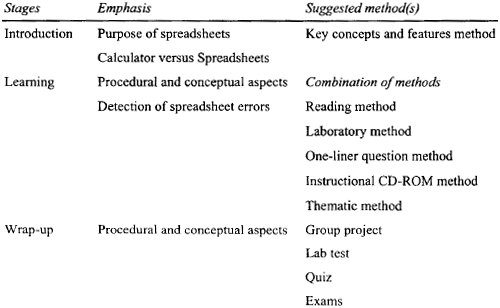Authors
Chan Boon Patrick Lee
Abstract
Many tertiary institutions teach spreadsheets as part of the introductory course on computing. The time allocated for spreadsheet teaching is usually limited and instructors are often faced with the dilemma of how to ensure effective coverage of the subject. Some instructors end up 'dumping' manual-like materials onto the students, thinking that they will read the materials religiously.
It is possible that the frequent occurrence of spreadsheet errors that has been established in prior research is a result of inadequate teaching. It is important, therefore, for instructors to know how to teach effectively.
This paper identified six teaching methods and discussed their advantages and disadvantages. This paper also proposed a three-stage spreadsheet teaching model that emphasises teaching the procedural and conceptual aspects of the software.
The model provides a useful guide for instructors and it should help to address the concern regarding frequent occurrence of spreadsheet errors.
Sample

The proposed teaching model incorporates three stages:
- Introduction. The instructor starts by introducing the software by using the key concepts and features method. The instructor provides an overall view of the spreadsheet software and points out that there are procedural and conceptual aspects pertaining to the software.
- Learning. Students then proceed to the learning stage to gain more knowledge of the spreadsheet software. Instructors should remember to cover the procedural and conceptual aspects of the software. Instructors should also engage the students in the practice of error detection.
- Wrap-up. The instructor should test the students' understanding in the wrap-up stage. This may include assignments, laboratory work, and exams.
Publication
2005, International Journal of Human Resources Development and Management, Volume 5, Number 2, pages 218-226
Full article
Not available
